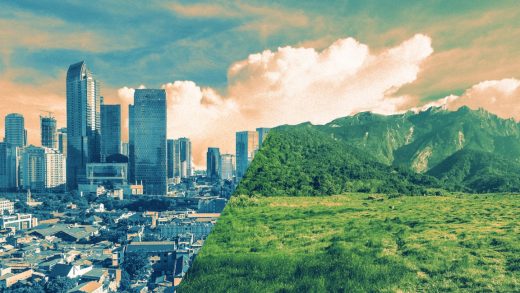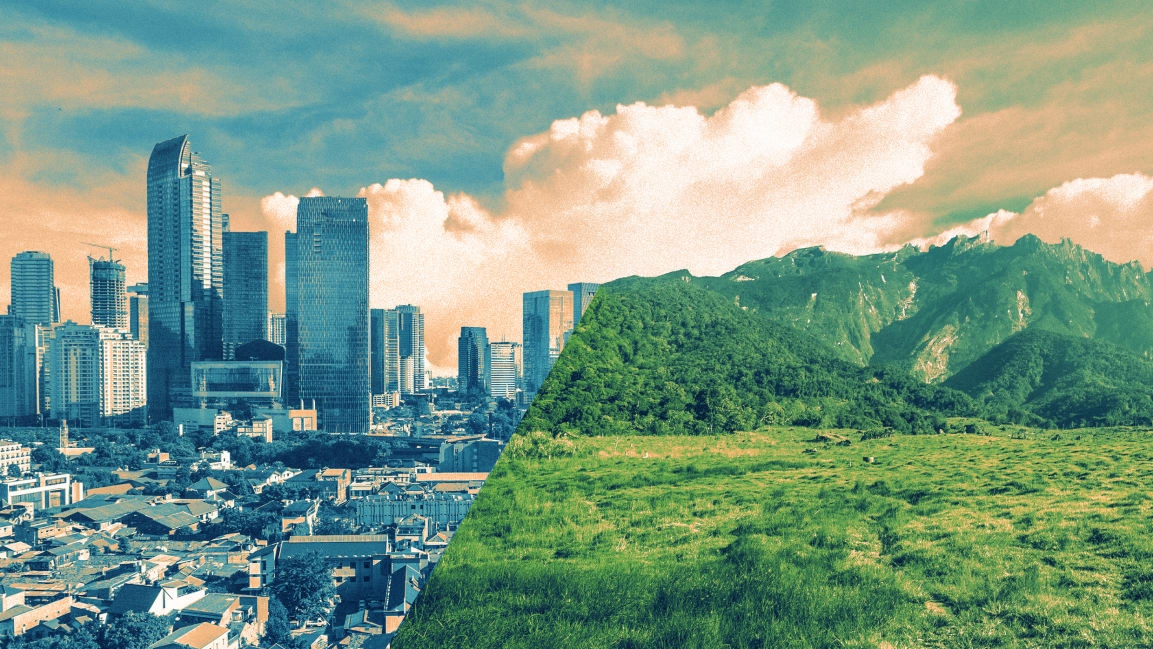Indonesia’s plan to escape from its sinking capital will put the rain forest at risk
As sea levels rise, Jakarta, the capital of Indonesia, is sinking; a large chunk of the city is already below sea level. That’s one reason that the megalopolis now plans to partially relocate, moving government offices, and as many as 1.5 million government employees, to another part of Indonesia and creating a new capital city. The planned site is in Borneo, a sparsely populated island that is home to some of the world’s last large stretches of rainforest.
The government hasn’t revealed the exact location of the new development, though it may be between two protected conservation areas in Kalimantan, on the Indonesian side of Borneo (Malaysia and Brunei control other parts of the island). “It’s inevitable that environmental problems will happen there,” says Jasmine Puteri, a senior forest campaigner at Greenpeace Indonesia. Indonesia’s president has claimed that it can build the city without destroying protected forests, but the city, like Jakarta, is likely to sprawl. Even the initial plans call for building on an area as large as 247,000 acres, which would be bigger than Dallas.
If that happened on forested land and peatlands, it would impact the climate. A researcher at the nonprofit World Resources Institute calculates that clearing 247,000 acres of intact forests in East Kalimantan could release 48 million tons of CO2. “Destroying the province’s vital peatlands would also release massive emissions,” says Arief Wijaya, the nonprofit’s senior manager for climate and forests in Indonesia. Losing forests and peatlands would also mean losing the ability to absorb emissions, and the area would also become more prone to fires. In the best-case scenario, if the government can avoid clearing the forest as it builds, the new capital will still likely draw more people on the outskirts. Jakarta has more than 10 million residents, in a metro area of more than 30 million.
Borneo’s rainforests are already under extreme pressure. In 1970, three-quarters of the island was covered in forests. By 2010, that had shrunk more than 30%, thanks to palm oil plantations, logging, and forest fires. Since the beginning of the millennium, the orangutan population has dropped by more than 100,000. Coal mining is another source of environmental problems in the area, and the country is planning to build new coal power plants there even as the government talks about making the new capital “green.”
The move also won’t solve the problems in Jakarta, even if a large number of people move. The city, built on swampland, is sinking partially because people are pulling drinking water from underground aquifers at unsustainable rates. Some neighborhoods are subsiding as much as 10 inches each year. By the middle of the century, as seas continue to rise, most of the northern portion of the city could be submerged. It already regularly has disastrous floods. If moving part of the population elsewhere helps in the short term with problems like traffic congestion and pollution from cars, it also risks moving those problems to a new place. “Simply moving the capital from Jakarta will not necessarily address the problems in the city,” says Wijaya. “It is important to continue addressing the problems in Jakarta while mitigating the negative impact of the move.”
The decision to move was made too quickly, says Puteri. “From Greenpeace’s perspective, the process is very hasty,” she says. “It did not undergo public consultation . . . there was no open discussion, let alone about environmental issues.”
(18)



